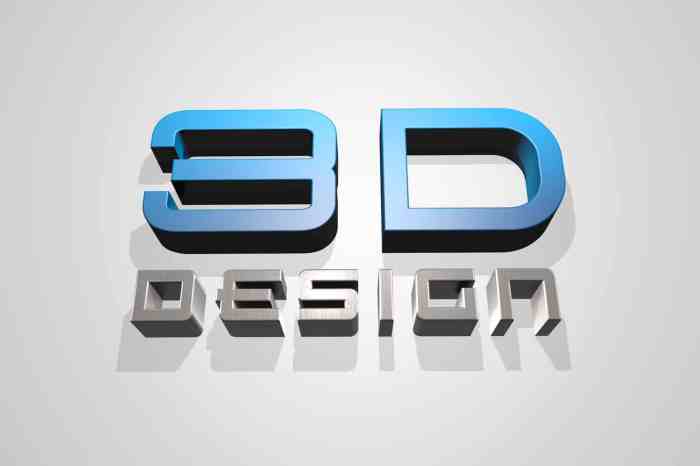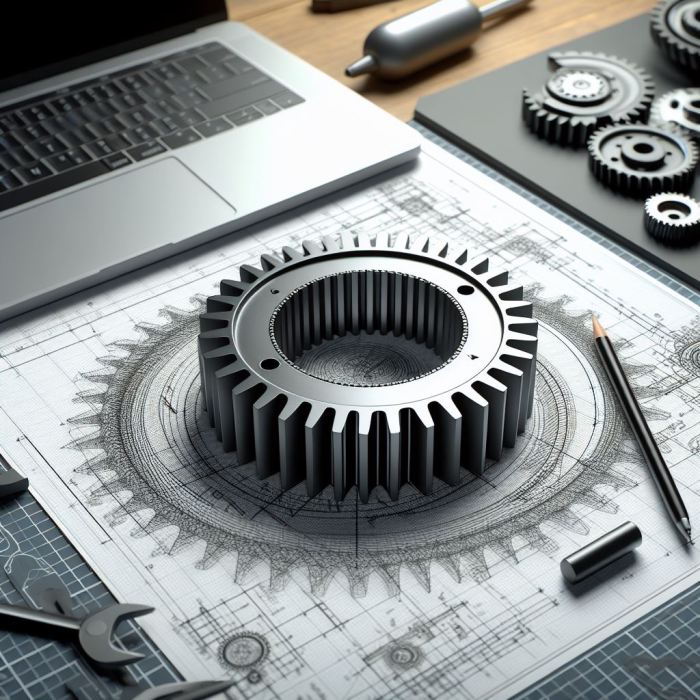Exploring the World of 3D Design
Embark on a journey into the realm of 3D design, where creativity meets technology to bring ideas to life in three-dimensional space. From architecture to animation, the possibilities are endless in this dynamic field.
What is 3D design?
D design is the process of creating three-dimensional objects or environments using computer software. This technology allows designers to visualize their ideas in a realistic and immersive way, making it an essential tool in various industries such as architecture, gaming, animation, manufacturing, and fashion.
Difference between 2D and 3D design
In 2D design, artists work with flat images or drawings on a two-dimensional plane, while in 3D design, they can create objects with depth, height, and width. This added dimension in 3D design allows for more realistic and detailed representations of objects and environments.
Examples of 3D design applications
- Architecture: Architects use 3D design to create detailed models of buildings and structures before construction, allowing them to visualize the final product and make necessary modifications.
- Gaming: Game developers use 3D design to create characters, environments, and assets for video games, enhancing the overall gaming experience with realistic graphics and animations.
- Manufacturing: 3D design is used in manufacturing industries to prototype products, optimize designs, and simulate production processes, leading to cost savings and improved efficiency.
- Fashion: Designers use 3D software to create virtual prototypes of clothing and accessories, enabling them to visualize how the garments will look and fit before producing physical samples.
Tools for 3D design

When it comes to 3D design, utilizing the right software is crucial to ensure efficient and effective creation of three-dimensional models. Different software tools offer various features and functionalities that cater to the diverse needs of designers and artists. Let's explore some popular software used for 3D design, compare their features, and understand the benefits of using specific tools for 3D design projects.
Popular Software for 3D Design
- Autodesk Maya: A comprehensive 3D animation, modeling, simulation, and rendering software widely used in the entertainment industry for creating visually stunning animations and special effects.
- Blender: An open-source software known for its versatility and extensive features, including modeling, sculpting, animation, compositing, and more. It is favored by independent artists and small studios.
- SketchUp: A user-friendly 3D modeling software suitable for architectural and interior design projects, offering intuitive tools for creating detailed models and visualizations.
Comparison of Features
| Software | Key Features |
|---|---|
| Autodesk Maya | - Advanced animation tools - Dynamics and effects simulations - Scripting capabilities for customization |
| Blender | - Powerful sculpting and texturing tools - Real-time rendering engine - VFX compositing |
| SketchUp | - Easy-to-use interface - Extensive library of 3D models - Integration with other design software |
Benefits of Using Specific Tools
- Autodesk Maya offers a wide range of tools for complex animations and simulations, making it ideal for professional animators and visual effects artists.
- Blender's open-source nature allows for continuous development and a supportive community, making it a cost-effective option for artists looking for powerful features.
- SketchUp's simplicity and focus on architectural design make it a go-to choice for architects, interior designers, and hobbyists who need quick and precise 3D modeling capabilities.
Techniques in 3D design

Creating 3D designs involves the use of various techniques to bring virtual objects to life, ensuring realism and functionality in the final product. Let's explore some common techniques used in 3D design.
Modeling
Modeling is the process of creating a 3D representation of an object using specialized software. Designers can choose from different modeling techniques such as polygonal modeling, NURBS modeling, and sculpting to craft intricate details and shapes.
Texturing
Texturing adds visual detail to 3D models by applying textures or materials to surfaces. Designers can use techniques like UV mapping, procedural texturing, and image-based texturing to enhance the realism of their creations.
Lighting
Lighting plays a crucial role in 3D design as it affects the mood, atmosphere, and visibility of the scene. Designers can experiment with different lighting setups, shadows, and reflections to achieve the desired look and feel of their 3D models.
Animation
Animation brings movement and life to 3D designs, allowing designers to create dynamic and engaging visuals. Techniques such as keyframing, rigging, and motion capture are commonly used to animate characters, objects, and environments.
Rendering
Rendering is the process of generating the final 2D image or animation from a 3D scene. Designers can adjust rendering settings like resolution, lighting, and materials to produce high-quality visuals that showcase the details of their models.
Optimization
Optimizing 3D models is essential for various purposes such as real-time applications, gaming, and AR/VR experiences. Designers can reduce polygon count, simplify textures, and use LOD (Level of Detail) techniques to ensure optimal performance without sacrificing visual quality.
Applications of 3D design

D design finds extensive applications across various industries, revolutionizing the way professionals create, visualize, and communicate their ideas. Let's explore some of the key areas where 3D design plays a crucial role.
Architecture and Interior Design
D design is an indispensable tool in architecture and interior design, allowing designers to create realistic and detailed models of buildings, spaces, and interiors. By using 3D design software, architects and interior designers can visualize their concepts, make necessary modifications, and present their ideas to clients in a compelling and immersive manner.
This technology enables stakeholders to better understand the final look and feel of a project before actual construction begins.
- Facilitates the creation of detailed architectural models
- Helps in visualizing and planning interior spaces
- Allows for better communication with clients and stakeholders
Product Development and Manufacturing
In product development and manufacturing, 3D design is a game-changer, streamlining the design process, reducing time-to-market, and minimizing production costs. Designers can create intricate 3D models of products, test them virtually, and make improvements before moving to physical prototyping. This not only speeds up the product development cycle but also ensures that the final product meets quality standards.
3D design in product development enables rapid prototyping and iteration.
- Enhances product visualization and prototyping
- Optimizes manufacturing processes and reduces errors
- Facilitates collaboration between design and engineering teams
Animation and Visual Effects
The entertainment industry heavily relies on 3D design for creating stunning animations and visual effects in movies, TV shows, video games, and advertisements. 3D modeling and animation software allow artists to bring characters, environments, and special effects to life in a realistic and captivating way.
The use of 3D design in animation has transformed the way stories are told and visual experiences are crafted, captivating audiences worldwide.
- Enables the creation of lifelike characters and environments
- Enhances visual storytelling and audience engagement
- Opens up new creative possibilities for filmmakers and animators
Final Thoughts
In conclusion, 3D design opens up a world of innovation and creativity across various industries, revolutionizing the way we visualize and create. Dive into this exciting realm and unleash your imagination in the realm of 3D design.
Q&A
What is 3D design?
3D design involves creating three-dimensional representations of objects or environments using specialized software, offering a more immersive and realistic view.
What are some common techniques in 3D design?
Common techniques include modeling, texturing, lighting, and rendering, which combine to create lifelike 3D visuals.
How is 3D design used in architecture?
3D design allows architects to visualize and present their designs in a realistic manner, aiding in better communication and understanding of the project.
What are some popular software tools for 3D design?
Software like Blender, Autodesk Maya, and Cinema 4D are popular choices for 3D design due to their robust features and versatility.
Why is rendering important in 3D design?
Rendering adds realism to 3D models by simulating lighting, shadows, and textures, enhancing the overall visual appeal.




